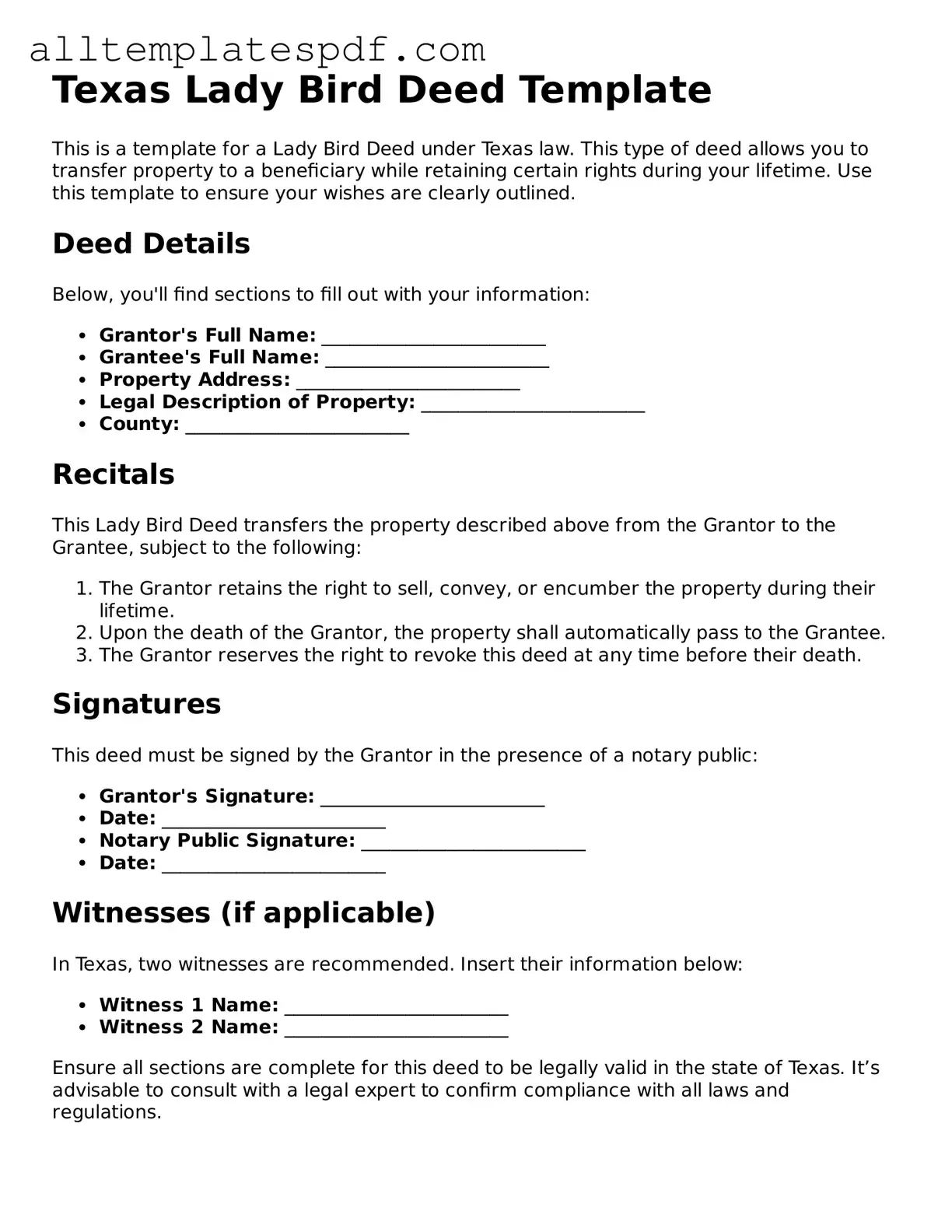Filling out the Texas Lady Bird Deed form can be a straightforward process, but mistakes often occur. One common error is failing to include all necessary parties. It is crucial to list both the grantor and the grantee accurately. Omitting a name can lead to complications down the road, particularly when it comes to property rights.
Another mistake involves incorrect property descriptions. The deed must clearly identify the property being transferred. Using vague language or incomplete addresses can create confusion. It is essential to ensure that the legal description of the property is precise and matches public records.
Many individuals also overlook the importance of signatures. The Lady Bird Deed must be signed by the grantor. If the grantor is not available, a valid power of attorney may be necessary. Failing to secure the proper signatures can render the deed invalid, causing delays in the transfer process.
Moreover, people sometimes neglect to have the deed notarized. Notarization adds a layer of authenticity and can help prevent disputes in the future. Without a notary's seal, the deed may face challenges during its enforcement.
Another frequent mistake is not recording the deed with the county clerk's office. Recording the deed is essential for making the transfer public. If the deed is not recorded, third parties may not be aware of the property transfer, leading to potential legal issues.
Lastly, individuals may fail to consider tax implications. While the Lady Bird Deed offers certain advantages, it is important to understand how it may affect property taxes and estate planning. Consulting with a professional can provide clarity and help avoid unexpected financial consequences.
